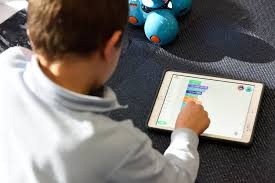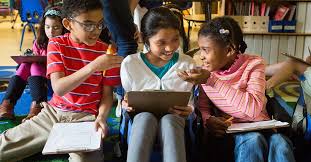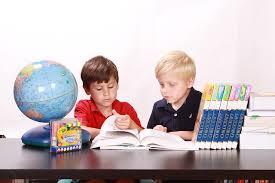What other games are suitable for students with special needs?
The 10 Best Toys and Games for Children with Special Needs
- Fidget Toys Sensory Bundle Set.
- Tumbling Monkeys.
- Bilibo Child Seat.
- Feelings in a Flash.
- Vtech Tote & Go Laptop.
- Teachable Touchable Texture Squares.
- Basic Skills Busy Board.
- Counting and Sorting Bears.
How do you entertain children with special needs?
Activities to Try With Special Needs Kids During the Coronavirus Pandemic
- Balloon Volleyball.
- Dig In.
- Find the Puzzle Piece.
- Fun in the Tub.
- Gelatin Fishbowl.
- Get Creative With Shaving Cream.
- Living Room Campout.
- Read Together.
How do you adapt a game for a disabled child?
Adapting common games so everyone can play
- Kids with disabilities want to play, just like any other kids. They want to interact, be active, socialize, make friends and join in the fun.
- Playing tag. Instead of trying to touch one another, use a safe and soft object like a foam pool noodle.
- Hide and seek.
Does my 5 year old have learning disability? If you notice your 3- to 5-year-old has difficulty rhyming, singing the alphabet song, or pronouncing words (especially when compared to other children their age), they might have a learning disability.
What other games are suitable for students with special needs? – Additional Questions
What are the 3 types of learning disabilities?
Understanding the learning skill sets of others allows you to communicate and teach more effectively. Underneath the learning disability umbrella, many disabilities are categorized as one of three types: dyslexia, dysgraphia, and dyscalculia.
What are the top 5 learning disabilities?
Keep reading to find out the 5 most common learning disabilities special education and their symptoms.
- Dyslexia. Dyslexia is probably the number one learning disorder auditory processing, visual processing disorders may have trouble that affects children and adults.
- ADHD.
- Dyscalculia.
- Dysgraphia.
- Dyspraxia.
How do I know if my kindergartener has a learning disability?
Your child might have a learning disorder if he or she: Doesn’t master skills in reading, spelling, writing or math at or near expected age and grade levels. Has difficulty understanding and following instructions. Has trouble remembering what someone just told him or her.
What are signs of dyslexia in a 5 year old?
Signs that a young child may be at risk of dyslexia include:
- Late talking.
- Learning new words slowly.
- Problems forming words correctly, such as reversing sounds in words or confusing words that sound alike.
- Problems remembering or naming letters, numbers and colors.
At what age should a child be tested for a learning disability?
Learning disabilities are usually not diagnosed until students have been in school for about three years, but there are often early signs of disabilities that parents may notice.
Does my kindergartner have a learning disability?
During the preschool and kindergarten years, children learn at different rates and with different styles. But if your child has significant trouble with numbers, letters, or speech, she may have a learning disability.
What are 4 signs of learning disabilities?
The signs of learning disabilities vary from person to person.
Common signs that a person may have learning disabilities include the following:
- Problems reading and/or writing.
- Problems with math.
- Poor memory.
- Problems paying attention.
- Trouble following directions.
- Clumsiness.
- Trouble telling time.
- Problems staying organized.
What are the 4 major types of learning disabilities?
Learning disabilities usually fall within four broad categories:
- Spoken language-listening and speaking.
- Written language-reading, writing, and spelling.
- Arithmetic-calculation and concepts.
- Reasoning-organization and integration of ideas and thoughts.
What are 5 early warning signs of learning disabilities?
What are the warning signs of a learning disability in children age 5 and under?
- Delayed speech.
- Pronunciation problems.
- Difficulty learning new words.
- Difficulty learning to read.
- Trouble learning numbers, the alphabet, days of the week, or colors and shapes.
- Poor concentration.
- Difficulty following directions.
What are the red flags in learning disability?
Learning disabilities look very different from one child to another. One child may struggle with reading and spelling, while another loves books but can’t understand math. Still another child may have difficulty understanding what others are saying or communicating out loud.
Can a child overcome a learning disability?
Learning disabilities have no cure, but early intervention can lessen their effects. People with learning disabilities can develop ways to cope with their disabilities. Getting help earlier increases the chance of success in school and later in life.
Are learning disabilities genetic?
Learning disabilities aren’t contagious, but they can be genetic. That means they can be passed down in families through the genes, like many other traits we get from our parents and grandparents. Someone with a learning problem probably has other family members who have had some learning troubles, too.
Are you born with learning disabilities?
What causes a learning disability? We do not always know why a person has a learning disability. Sometimes it is because a person’s brain development is affected, either before they are born, during their birth or in early childhood.
Are all learning disabilities formed from birth?
Learning disabilities are caused by something affecting the development of the brain. This may occur before birth (prenatally), during birth, or in early childhood. Learning disabilities can be caused by any one of a variety of factors, or by a combination. Sometimes the specific cause is not known.
What are the major causes of learning disabilities?
Illness during and after birth: An illness or injury during or after birth may cause learning disabilities. Other possible factors could be drug or alcohol consumption during pregnancy, physical trauma, poor growth in the uterus, low birth weight, and premature or prolonged labor.
Can an MRI detect learning disabilities?
Can a learning disability be diagnosed with help of MRI, CT scan and EEG by a neurologist? No. However, some tests such as an MRI or CT scan may be helpful in diagnosing a traumatic brain injury or other neurological damage that may be at least part of the cause for a learning disability.
How do you treat learning disabilities?
The most common treatment for a learning disability is special education or speech and language therapy; however, occasionally, medication can be tried to enhance attention and concentration.




